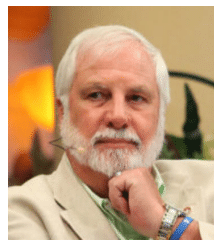In light of conditionalist (annihilationism) interpretations of Scripture, one of the interpretive mistakes I’ve discovered that when they encounter a Scripture that uses a figurative example in order to illustrate a literal truth, they extracted a literal subpoint out of the overall text and then interpret the whole text in light of the literal sub-point. Let me cite three scriptures as examples of what the annihilationists sometimes do in this regard.
- Isaiah 66:24, “Then they will go forth and look on the corpses of the men who have transgressed against Me. For their worm will not die and their fire will not be quenched, and they will be an abhorrence to all mankind.”
- John 15:5–6, “I am the vine, you are the branches; he who abides in Me and I in him, he bears much fruit, for apart from Me you can do nothing. 6 “If anyone does not abide in Me, he is thrown away as a branch and dries up; and they gather them, and cast them into the fire and they are burned.”
- Mark 9:47-48, “If your eye causes you to stumble, throw it out; it is better for you to enter the kingdom of God with one eye, than, having two eyes, to be cast into hell, 48 where THEIR WORM DOES NOT DIE, AND THE FIRE IS NOT QUENCHED.
Isaiah 66:24 and Mark 9:47-48
“Trito-Isaiah was not referring to an eternal fire, because eventually, that fire would stop burning after the corpses were completely consumed.”1
This quote illustrates how a single literal point within an illustration of biblical truth is used to interpret the whole quote. There is in logic an error called The Fallacy of Composition which is the error of assuming what is true of the part is also true for the whole. For example, the engine is blue; therefore, the whole car is blue.
Just because it is technically correct that worms die and fires do go out, it does not mean that in the New Testament context, Jesus was saying that the fires of hell will go out. What makes more sense is to understand that the Old Testament context of chapter 66 is eschatological. It mentions the new heavens and the new earth in verse 22. Jesus was referencing Isaiah in the context of the final judgment when he mentioned the unquenchable fire. Jesus used the imagery of undying worms and unquenchable fire to warn about the horrible consequences of sin and the coming judgment. The idea is to convey permanence and eternal judgment. But the conditionalist, with his presuppositions, and with risking the figurative and literal interpretive error, gets the text of Christ to say the opposite of what it appears to teach.
John 15:6
- “Trees with bad fruit are burned (Matt 7:19), as are unfruitful vines (John 15:6) and useless weeds (Matt 13:40). In Jesus’ teaching, as in John’s, these figures from the land represent sinners in the end. They stand for false prophets, hypocritical.”2
- “John 15:6, “If a man abide not in me, he is cast forth as a branch, and is withered; and men gather them, and cast them into the fire, and they are burned.” We notice that such branches are burned. The text does not say, “into the fire, where they are preserved forever in suffering.”3
In this illustration that is given by Christ in John 15:6, those branches that do not abide in Christ are burned. We can understand how real vines are burned with fire and stop existing. The conditionalist will then take the literalness and apply it to the whole of the verse. Let’s look at it again.
- John 15:5–6, “I am the vine, you are the branches; he who abides in Me and I in him, he bears much fruit, for apart from Me you can do nothing. 6 “If anyone does not abide in Me, he is thrown away as a branch and dries up; and they gather them, and cast them into the fire and they are burned.”
Notice that Jesus said that he is the vine and we are the branches. He was speaking figuratively. He spoke about us bearing fruit. Then he talked about how those who do not abide in him are thrown away as a branch and burned with fire. But, the context is obviously figurative and Jesus is using it to illustrate a spiritual point. It would appear that those who are not true Christians are cast in the fire and burned. He is relating the judgment of being burned to the imagery of vines that are also burned. Is the conditionalist truly warranted in insisting that the idea of these vines which are technically burned to nonexistence, must then be carried over to human beings in the final judgment and that they too are consumed and don’t exist? Conditionalist says yes. But, that’s what this whole series of articles in this section is about. The issue is what does the Bible actually teach about this?
In light of those questions, please consider other verses in the New Testament that support eternal conscious torment. Then, once examined, ask which is a better explanation for John 15:6? Is it that those who are burned stop existing? Or does the burning continue in the illustration of the final judgment of what will happen to the wicked?
References
| 1↑ | A Consuming Passion: Essays on Hell and Immortality in Honor of Edward Fudge (Kindle Locations 4252-4253). Pickwick Publications, an Imprint of Wipf and Stock Publishers. Kindle Edition, underline added |
|---|---|
| 2↑ | Fudge, Edward William. The Fire That Consumes: A Biblical and Historical Study of the Doctrine of Final Punishment, Third Edition (p. 130). Cascade Books, an imprint of Wipf and Stock Publishers. Kindle Edition, underline added |
| 3↑ | Rethinking Hell: Readings in Evangelical Conditionalism (Kindle Locations 2629-2632). Cascade Books, an Imprint of Wipf and Stock Publishers. Kindle Edition, underline added |





